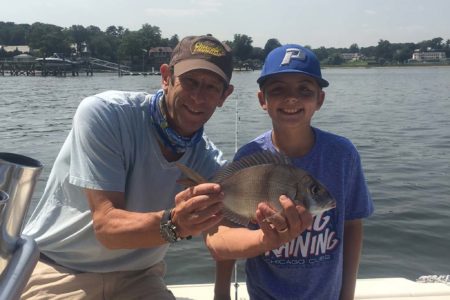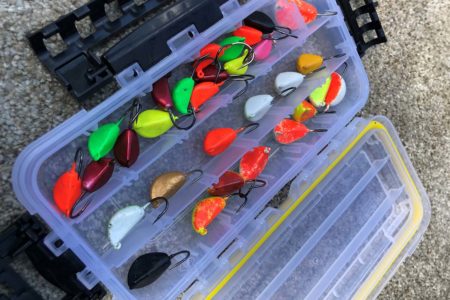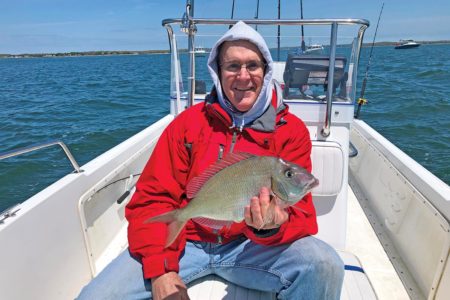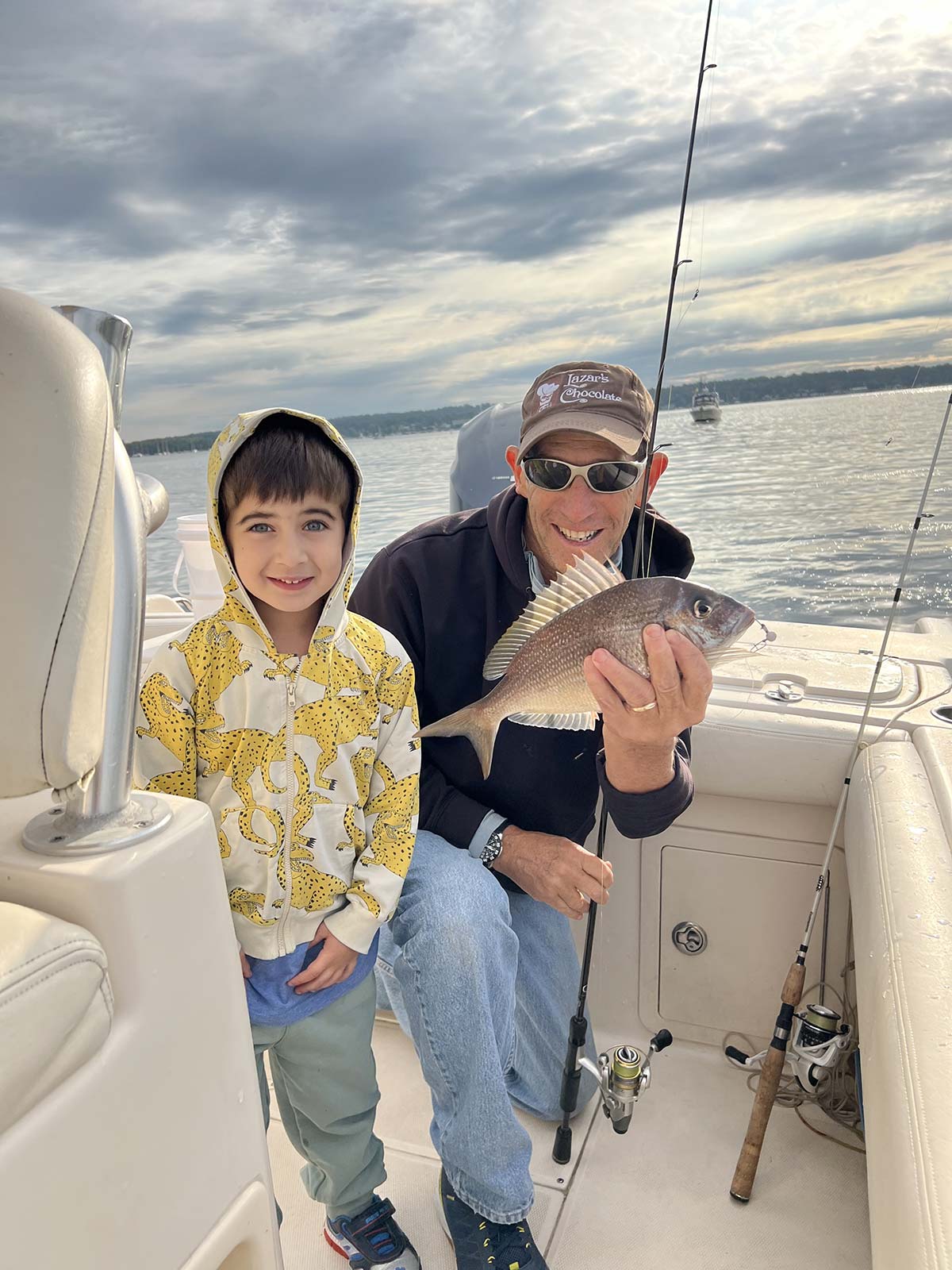
The perfect species to fish with the family for this spring.
Once upon a time, parents most commonly introduced their youngsters to saltwater fishing with flounder or snapper trips. Indeed, that’s how my dad introduced me to the briny. Both species were good ways to start because they were abundant, easy to catch, did not necessarily require a boat or special equipment, and were very agreeable adversaries on calm sunny days.
Inevitably, the world turns and things change. The French have a saying, “the more things change, the more they remain the same”. This fits the topic because although species abundance has changed, kids still want to learn to fish. Poor year classes of bluefish and the unexplained vanishing of winter flounder means adults need to find new pathways to introduce their children to the wonders of salt chuck fishing. Fortunately, porgies made a marvelous comeback in the last decades of the twentieth century and remain very abundant today.
Simple Tackle
Tackle need not be expensive. My dad started me snapper fishing with a cane pole and a length of line dangling from the tip. At the end of the line was a snapper hook and several inches above the hook was a split shot. A spearing threaded onto the hook completed the setup.
| TRY SOME FISHBITES |
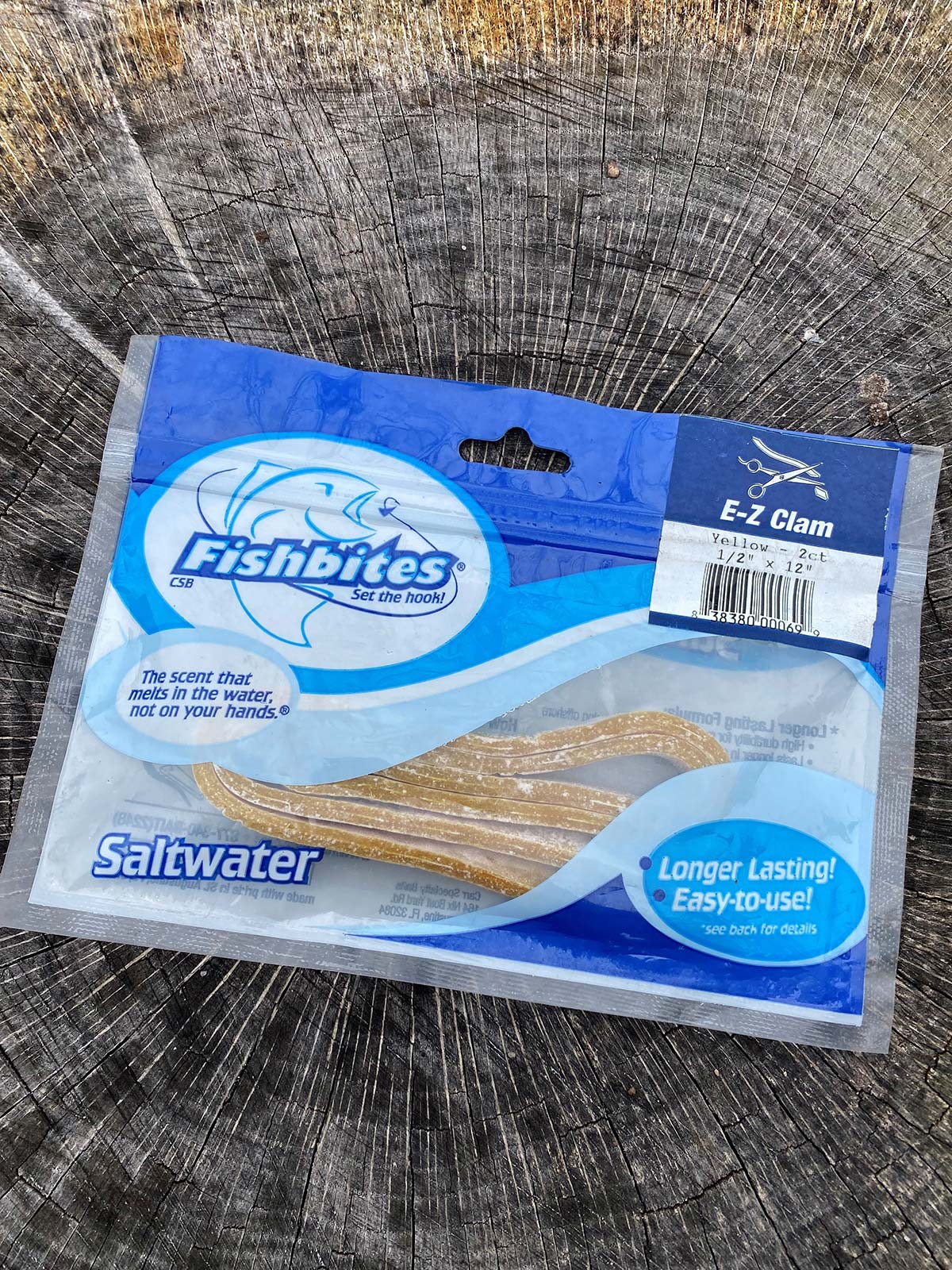 If you stopped by the Fisherman booth and signed up at any of the winter events, you might have received a package of Fishbites E-Z Clam or Squid. These packaged baits make a great no mess, no fuss alternative to using real bait in a pinch and best of all they can be resealed for use during a later date without refrigeration. |
Today, cane poles are no longer commonly used and certainly not useful for porgy fishing. However, that doesn’t mean other simple tackle won’t be effective. I believe most experienced anglers will agree that supplying kids with the best gear isn’t the best way to introduce them to fishing, but it’s also not a good idea to give them poor tackle: it simply can’t stand up to the briny. Spinning gear is easiest for a kid to use and therefore the best. Many companies make reels and rods, but there’s no reason to be overwhelmed by the array. The best bet is to consult a local bait and tackle dealer or sports equipment, store manager. I buy serviceable Okuma reels, and I’ve paid less than $40, but, like everything else lately, they are probably more expensive today. Prices will vary from place to place and store to store, and there are also other brands for about the same cost to choose from.
My kid-friendly outfit includes a 30 or 35-size reel spooled with 10-pound test braided line. These are not, however, reels that will last a lifetime but will survive for several years with proper care. Also, repairing these reels costs more than discarding them and buying another. A 6-1/2 foot or 7-foot rod with medium power and an extra-fast tip completes the outfit. I look for sales on rods that normally cost about $100, but on sale usually cost $30 or less when stores clear inventory. I spool up with 15 pound-test Sufix Performance Braid and add a 20-inch leader of 20-pound test mono. Equipment should be easy to use and good enough to allow kids to feel the bottom and light hits.
In the modern era of fishing, there are many terminal tackle options, from a small jig and clam to heavy tackle intended for wreck fishing. Neither seems suitable for children just starting to learn to fish. Instead, I recommend a single porgy hook rig. Two-hook styles tend to tangle, hooked fish throw the bait off the second hook, and catching two at a time with fish pulling in different directions may be confusing to a youngster trying to grasp basic angling techniques and the “feel” of things.
K.I.S.S.
I believe in the K.I.S.S. principle. That is, keep it simple, stupid! The simpler the gear, the fewer things a kid needs to focus on, and the easier the gear is to operate. So, one hook, very little hardware, a light, reliable rod and reel, and minimizing instruction is a good way for our children to learn and have fun at the same time. Youngsters need action to keep them in the game, and that’s why I’ve selected porgies as the target fish. Find the porgies, chum, and wait for bites. Children who have a boring experience may never want to fish again.
I’ve got two sons; one loves fishing, and the other doesn’t — not unusual. I started the one who likes to fish on snappers and flounder. Although he was interested in fishing for stripers, blues, and weakfish, I delayed that for a while. Then, when I saw capable tackle management, fish fighting ability, bite recognition, and fishing landing and handling ability, I took him for small bluefish in the Long Island Sound surf. Even if you’re lucky enough to get into a blitz, fishing for game fish is a world apart from flounder or porgy fishing.
First, porgy fishing is a rather passive activity, while fishing for gamefish involves casting and retrieving repeatedly. Second, we tend to move a lot to stay with the gamefish. Third, not every cast produces a hit. Indeed, this frustrates adults, so imagine what it might feel like to a kid who hasn’t had enough experience to understand it’s normal for gamefish. By the way, I didn’t start my son in the South Shore surf with 6-foot waves, crashing surf, heavy surf gear, a sweep, and cold, wet weather as I see some people do. If you want to put a child off to fishing, do the latter.
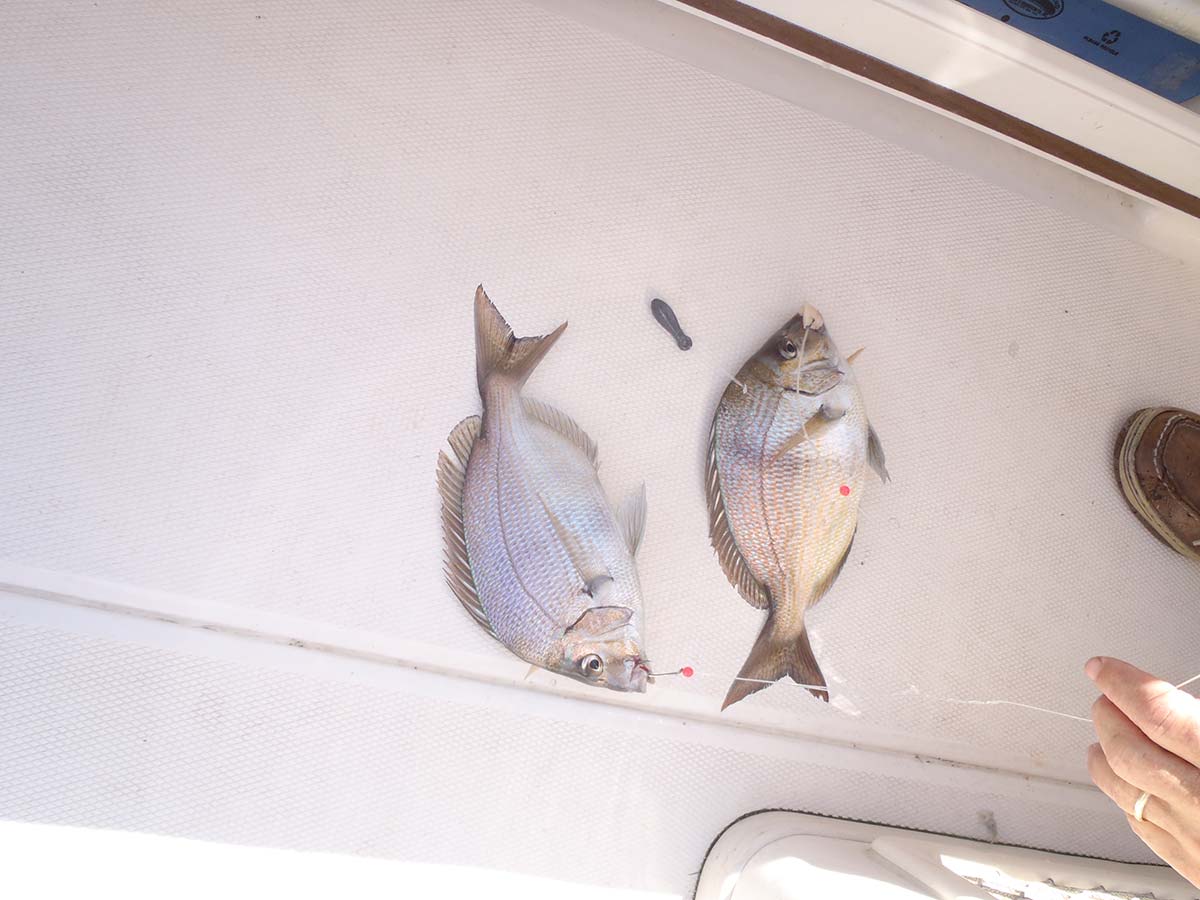
Parental Involvement
Like it or not, if you want your child to enjoy fishing, you will have to sacrifice some of your own fishing time to make it work. Put your rod and reel down, and actively mentor the child. Pay close attention to how your child is fishing and make small corrections as you go. Make suggestions, not orders that will not only catch more fish but create an enjoyable link between fishing, and fun time spent with you. In addition, you may be willing to sit in one place and wait for a half-hour to an hour to get the porgies going, but your child will not appreciate that. So, head out at what you know to be prime time in the tide, in good weather, and to a spot where you’ve had consistent success, but if the fish don’t cooperate, move. A boat ride is more fun than no action.
Conservation
| SAFETY WHILE FISHING |
| Introducing youngsters to fishing is a wonderful opportunity to teach. One crucial lesson is about safety. Be alert to how your child tackles the tasks of angling. Is your child careless around hooks? Have you cautioned the youngster about porgy spines and sharp gill plates, and is the life preserver still properly secured? Obviously, the child’s age and prior experience play into how much attention you give to these items and exactly what you allow your child to do. Maybe, the child is too young to bait a hook or take a fish off, but you can demonstrate how to do it properly and safely. |
When my dad first took me flounder fishing, it was easy to catch 50 to 100 flounder and tempting to keep all or most of them. However, my dad was ahead of his time in an era when few fish were returned to the ocean. So, informally he taught me the value of catch and release. He might say, “Put that one back; it’s too small to keep,” or “Let that one go, so we can catch it next time when it’s bigger.” One significant lesson stands out in my memory. On one trip, I insisted on bringing home a lot more flounder than we needed. My father assured me that we had enough, but I insisted. Finally, he said, “Okay, keep what you want, but you will have to clean all of them.” Young and impulsive, I said, “Sure!” That was one of the worst and most laborious decisions of my young life, and I never did it again.
He also explained how the ocean systems worked. Long before we used the word ecosystem, he explained how all the animals and plants were interconnected and not in unlimited quantities. Therefore, we needed to harvest fish responsibly. These were lessons that have been meaningful my whole life, and I’ve handed this ethic down to my children.
The Obvious Things
There are a few other items to put on the checklist. For example, make sure your child is properly dressed for the weather. Have food and drinks with you. Kids get hungry and thirsty frequently, but eating and drinking also fills the time between flurries of action. Include a few simple snacks that easily unwrap and can be eaten in addition to sandwiches. As mentioned above, have child-size life preservers on board. Cushions and large sizes of jacket styles may work for adults but not for kids. Finally, go over what you’ll be doing and boat safety before you leave on the trip.
Docks, Piers & Surf
Although often overlooked, porgies are available from these places. Obviously, there is more mobility on a boat, more options, and perhaps more success. Depending on how you and your child view these things, a boat can be a more comfortable or less comfortable venue.
Although porgies are caught from many shore locations, not all are productive. If you live near the ocean, the back bays offer bottom structure where porgies hang out. That’s important because porgies tend to congregate at or near structure. Unlike fall blackfishing, the structures don’t need to be rugged. Being stuck in the bottom over and over and losing terminal tackle is a turn-off for children.
Shoreline patches of Spartina (marsh) grass attract porgies at high tide because that’s where small fishes and invertebrates hang out. In harbors or sounds, just a boulder or two is enough to gather up porgies. Piers, docks, and other elevations tend to have reasonably deep water in front that will hold porgies through almost all sections of a tide, but beaches are different. At a beach, porgies move toward shore with the rising tide and offshore as the tide ebbs. I prefer the last two hours of the incoming and first two of the outgoing tide when fishing for porgies from the beach.
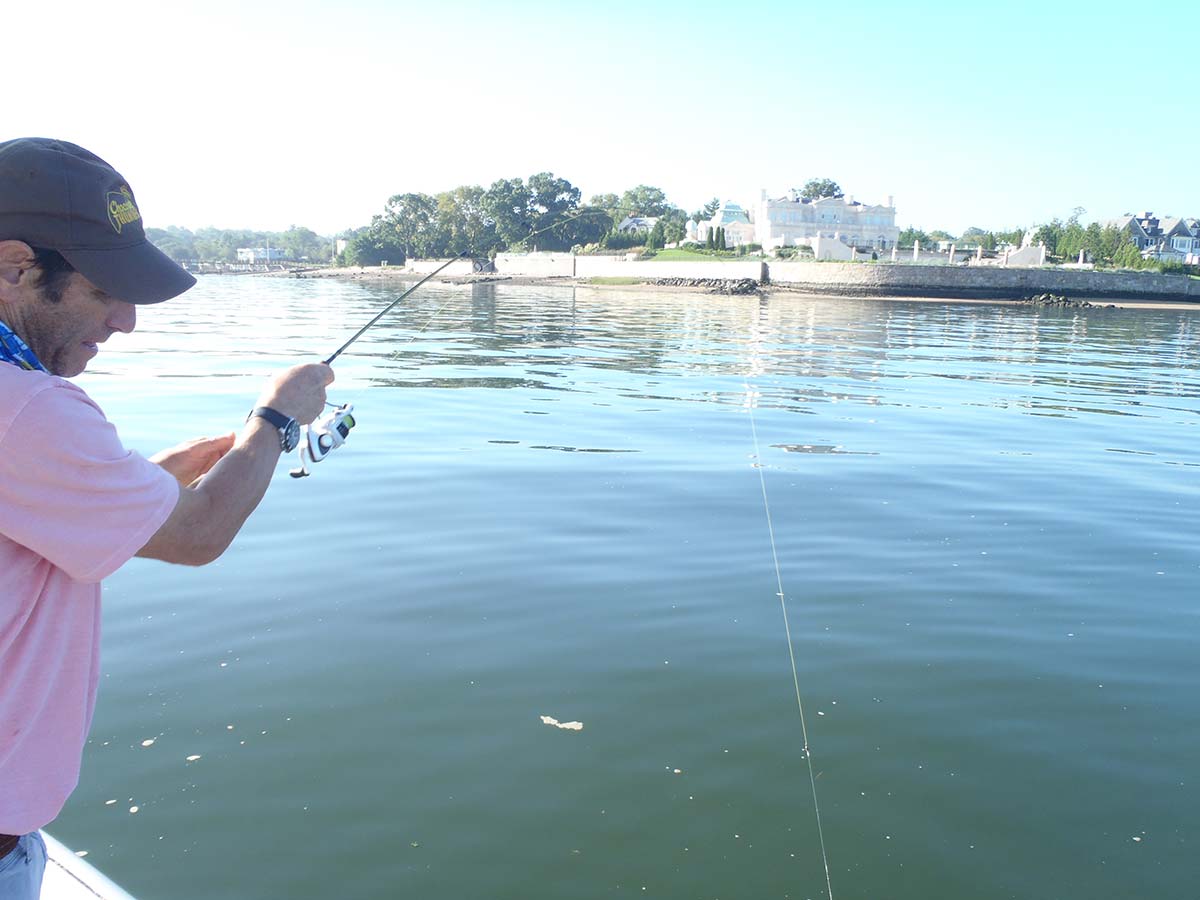
Bait For Porgies
Porgies will eat almost anything, so there’s no need to get fancy about bait. I use clams because they are readily available, not expensive, porgies love them, are easy to thread on a hook, and, when salted, keep well in a fridge. I’ve also collected common ribbed mussels and Asian crabs for bait and also used squid, worms, and small baitfish.
Porgies are notorious bait stealers regardless of the bait you use, and kids may be frustrated at the start because they have trouble feeling the hits. This is another teaching moment. Encourage your child to avoid slack in the line while you watch the tip of the rod. Although your youngster may not feel the bite, you might notice the tip bounce. Draw your child’s attention to the rod tip with encouragement to make a connection between the bounce and any change in feel through the rod.
Hook setting and fighting a fish are also sometimes difficult for a child in the beginning. For some reason that I’ve never figured out, there is a tendency among new anglers; young and old alike, to strike upward but then lower the rod quickly, creating slack and allowing the fish to escape. Remind the child to keep the rod bent and the line tight.
